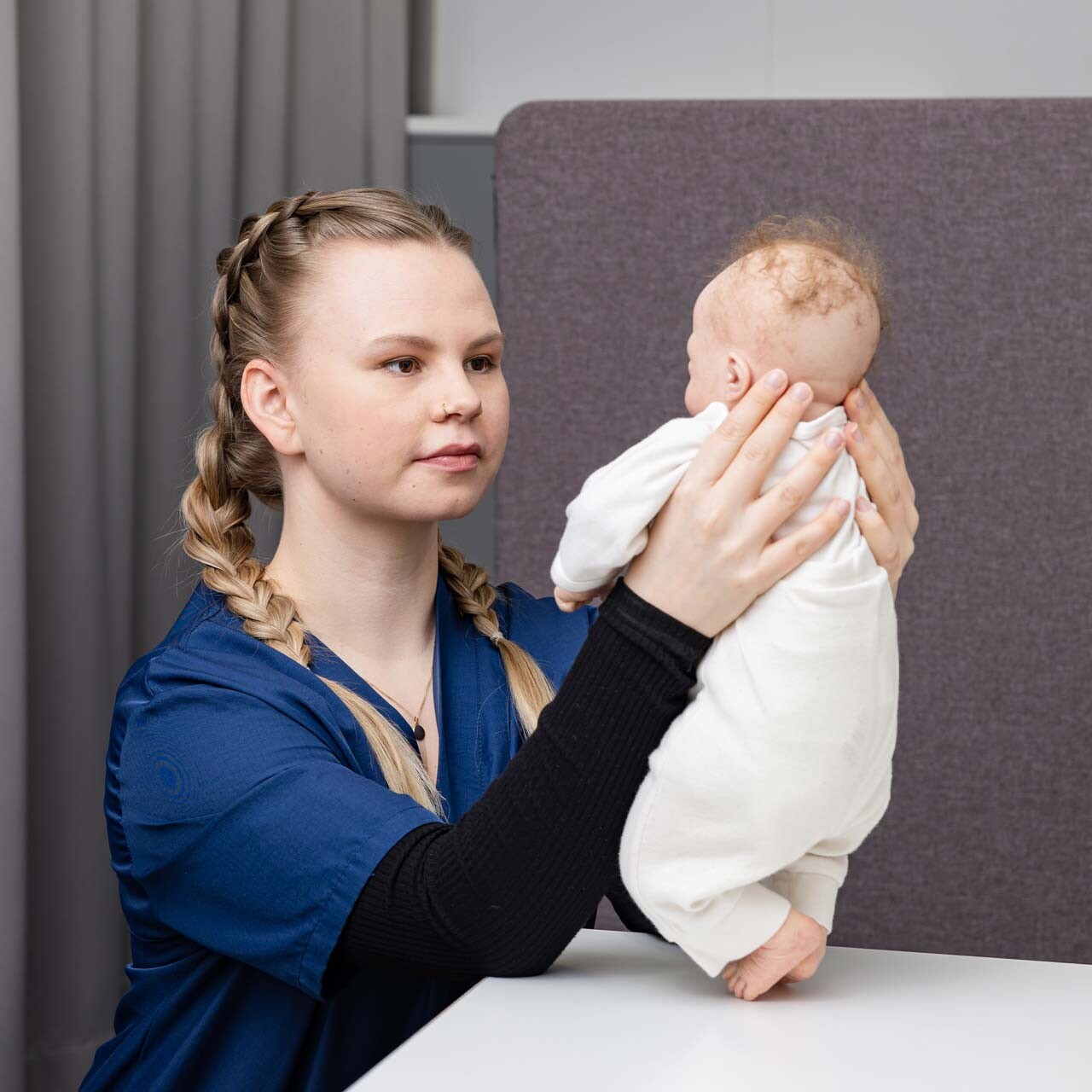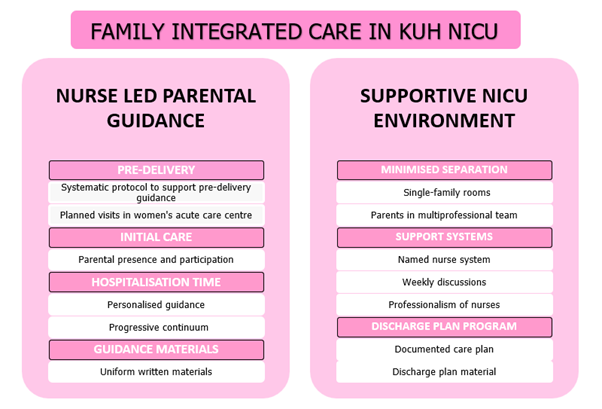
Savonia Article: A New Era of Neonatal Intensive Care: Digital Care Paths for Family Integrated Care
Family integrated care is proven to promote parental engagement and development of parents’ self-sufficiency in neonatal intensive care. Digital care paths could be one way to support family integrated care in neonatal intensive care units and guarantee safe, fact-based, and professionally developed educative material. Digitalisation of health care gives an opportunity to access care related information regardless of time and place.
Family integrated care model
Newborn babies have shown better wellbeing overall compared to traditional care models in neonatal intensive care units with family integrated care protocols education, psychology, communication, and environment. This type of care intends to guarantee families accessible, unbiased information concerning their baby, and involves parents in the decision-making process during the hospitalisation period. The goal is to allow parents, as well as siblings, to have unlimited access to the unit, and to be bedside with their baby.
Digital services in NICU
Using mobile technology and eHealth solutions is new in neonatal intensive care, and there is no systematic protocol to follow. Due to the heterogeneity of the studies available, it is difficult to conduct analysis of current services’ usability. However, there are trends visible about the impact of digital services in neonatal intensive care. Parents are willing to accept digital services as a part of their journey.
Starting a digital care path development project in Kuopio University Hospital neonatal intensive care unit
In thesis research done at Kuopio University Hospital neonatal intensive care unit, registered nurses were asked to describe the current family integrated care protocols, and the use of the current, printed discharge plan. The current discharge plan was studied, because the quality of the discharge planning is a significant predicator of the parents’ ability to be transferred home safely with their baby.
It became clear that the single most important theme allowing successful family integration is nurse led parental guidance. The nurses also described the Kuopio neonatal intensive care unit to be supportive of family integration, since all families are offered single-family rooms, and unlimited parental presence is allowed. (Figure 1.) The main challenges affecting family integrated care practices as described by nurses were related to a busy work environment, lack of resources and occasional lack of systematicity when guiding parents in the neonatal intensive care unit.

Figure 1. Family integrated care in Kuopio University Hospital Neonatal intensive care unit (Huhtamäki & Nupponen 2023).
The nurses described that the printed discharge plan is only partly in active use. It was stated in every interview that there are great differences in how and when the sheets are reviewed. It was agreed that the material needs to be updated and compiled into one cover instead of numerous separate forms and sheets.
What is next?
The results of the thesis show that a digital care path could offer a solution for neonatal intensive care units. However, future research and development is needed.
The printed discharge plan used by Kuopio University Hospital has potential to be transformed into a digital form as a part of the future digital care path solution. Further study is needed, first about the usability of the current sheets, and then reasons why some sheets are not used, or used inconsistently.
In Finland, digital care path users are mostly outpatients with long term diseases. But the need for a digital care path in neonatal intensive care unit should not be overlooked. Having a roadmap like this as a part of the digital care path and family integrated care protocols could connect the parents more deeply into their baby’s care path.
This article is based on Master’s thesis by Niina Huhtamäki’s and Sini Nupponen’s “The current state of family integrated care model in Kuopio University Hospital Neonatal intensive care unit”. (2023). The references are available from the writer.
Niina Huhtamäki, registered nurse, procurement specialist, Sansia Oy, niina.huhtamaki@sansia.fi
Sini Nupponen, registered nurse, KUH, sini.nupponen@pshyvinvointialue.fi
Master of Digital Health (Students)
Bryn Lane, Part-time Lecturer, MBA, CFA, Savonia University of Applied Sciences, Unit of Continuous Learning, Master School, Kuopio
Liisa Klemola, Lecturer, PhD, Savonia University of Applied Sciences, Unit of Continuous Learning, Master School, Kuopio, Finland